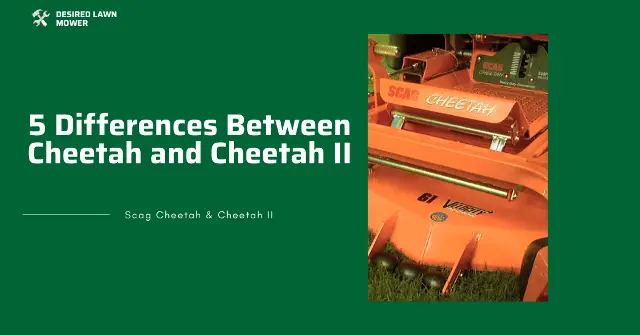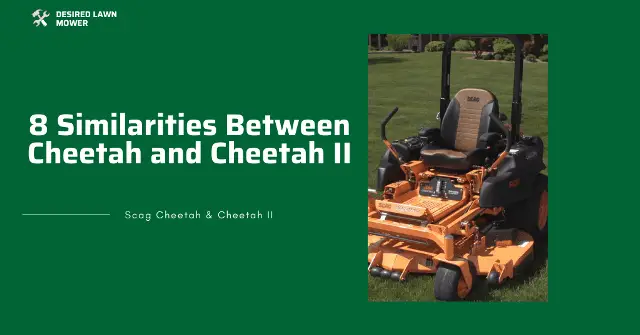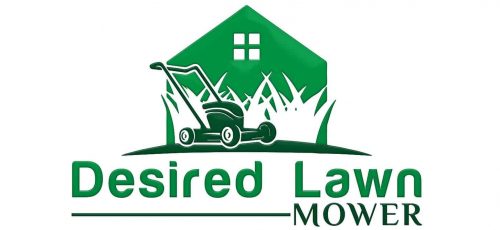The two feisty Scag wild cats — Cheetah and Cheetah II — are commercial-grade zero-turns built for beast-like strategies and challenges. If put to the test, which one of them will suffice as your winner?
Scag zero-turn mowers have stamped their tires on the lawns of residents and the businesses of professionals. There’s something about how every feature is thoughtfully put together to present a literal grass-devouring monster! Every component of the machine is made to withstand the wrath of hard labor and is thoughtfully brought together to pursue that purpose– simply put.
There’s been a few changes made to the Cheetah to assemble the Cheetah II making it more of a solved problem than an intentional individual model. It’s puzzling to decide on the intent of the two scag Cheetahs– Why didn’t the company just remake the first Cheetah with the required fixes instead of manufacturing a strikingly similar model? Well, whatever the reason may be, you’re about to find out.
In this article, I’ll be highlighting the few differences and similarities of the Scag Cheetah & Cheetah II, also deciding which model will serve as a much better option for you.
Let’s dive into it!
The Differences Between The Cheetah & Cheetah II Are Easily Dismissable

- A Difference in Aesthetics
If you put the Cheetah and Cheetah II side by side you’d notice a more advanced futuristic look on the Cheetah II. I’m not quite sure if this does anything to the lawn, but it sure as heck is pleasing to see; there are more of the black hues swiped across certain areas of the machine and the logo is rebranded to suit the interest too. I’m sure this trait is more targeted at making market sales and economics.
- The Gas Tanks Are Shaped Correctly on The Cheetah II
There’s been a throng of disgruntled complaints about the shape of the gas tanks on the initial Cheetah; they are shaped in an unnecessarily elongated manner that completely blocks the wrench from accessing the spindle pulleys, you’d have to go over and beyond to successfully unfasten the plate and take it off, which is simply impractical.
On the Cheetah II, the gas tanks are much more compact giving enough room for easy access to the spindle. The elongated sloping shape cuts abruptly on getting to the deck giving it more of a preferable shape in comparison. If you have any experience with the Cheetah’s obstructing gas tank, you’d be relieved to find a difference in the Cheetah II.
- The Seats Are Much Lower on The Cheetah II
The comfort associated with zero-turn mower seats is mostly defined by armrests and luscious padding, but for some people on the tall side, a high-back seat for a little relief is just as important especially when professional mowing is in the picture.
You’ll find that the original seats that come with the initial Cheetah are cream-colored and a lot higher in comparison to the Cheetah II. The reason why there was a need to reduce the height is uncertain, but it definitely is a bummer for the heighty lawn tenders. Well, at least the armrest remained– if those were absent on the Cheetah II it would’ve been a totally different ball game.
- The Scag Cheetah Has Better Rear Protection, But the Cheetah II Offers Better Ventilation
Facing the rear of both machines if they’re placed side by side, you’ll notice that the Cheetah has a metal plate covering almost the entirety of the engine and air filter. Meanwhile, in place of a metal plate, you’ll find two metal bars going across the rear of the Cheetah II. Although the Cheetah is probably more protected, the bars on the Cheetah II provide ventilation for the engine which is also necessary.
- The Scag Cheetah Has More Fuel Tank Space
The dual fuel tanks collectively measure 15 gallons for the Cheetah and 13 gallons for the Cheetah II. Situated on either side of the mower, each tank carries 7.5 gallons of fuel to the Cheetah and 6.5 gallons for the Cheetah II. This asserts that you have extra work time on the Cheetah worth 2 gallons of fuel, which is quite useful. You have no idea how much 2 gallons can go for you– possibly 4 to 5 extra hours.
There isn’t any grand-entrance difference between the Cheetah & Cheetah II. It’s just a matter of a few tweaks here and there; a difference in tank shape rewarding deck accessibility, seat height, and appearance.
The Heap of Common Similarities Between The Scag Cheetah & Cheetah II

The Cheetah and Cheetah II will mostly be addressed for their similarities rather than their differences. Buckle up because they’re a whole lot.
- Outstanding Power
The Cheetahs were produced for heavy-duty labor and came prepared with their properly matched powerful engines. Offering 31, 38, & 38.5 Kawasaki engines, and a 37-horsepower Briggs Vanguard engine. All electronic injected fuel engines excluding the 31-horsepower Kawasaki.
The engines are backed up by commercial-grade canister air filters that provide the required filtering and protection to keep the firecracker motors running.
The exceptional amount of horsepower is properly fitting for the heavy deck and intense duty the machine is made for, not to ignore the fact that naturally, the Cheetahs are quite the bulky build of a zero-turn mower. All in all, there’s no circumstance or situation where you’d be underpowered, I guarantee you that.
- The Two-Speed ZT-5400 Transaxle System
ZT-5400 is the top-notch choice for commercial zero-turn mowers because not only do they fully satisfy the requirements for speed, they would need to match the tremendous horsepower of the machines. The two-speed system attributed to Scag Cheetahs is made for switching speed ranges from 12mph to 16mph for required purposes like gliding across the yard for reasons that could either be errands or storage. Since about 15 to 30 acres of land is very much speculated, it’s only fitting to be able to zap through the field.
Although there isn’t much mowing you can do at the 16 miles per hour unless it’s more of finishing touches here and there. The fundamental grass-cutting would have to be done at 12mph for effectiveness.
To control the speed, there’s a lever at the left side of the mower if you’re sitting in it– it’s pretty intuitive and easy to operate.
- The Much-Hyped High-Velocity Cutting Deck on Cheetah & Cheetah II
There’s been a lot of praise showered on the cutting quality of the Scag Cheetahs, this is because of the high-velocity deck they come with. High-velocity decks are made to develop inclined levels of airflow around the deck. They are engineered with extra space between the blades for propelling better volumes of air so that grass clippings are cut several times before being jutted out.
The High-Velocity decks for the Scag Cheetah and Cheetah II come on 61 and 72 inches only for commercial use. In some cases, 54-inch decks are matched with the Cheetahs, but only on demand. The decks are fabricated steel decks with a tri-plate feature made from a combined technique of 7-gauge, 10-gauge, and 11-gauge steel, built to withstand the toughest and roughest scenarios.
Cutting heights are from 1.25 to 5 inches in increments of quarters and are operated by a commercial foot pedal and pin system. Be ready to put a ton of pressure on that pedal, the deck carries as much weight as it deserves!
The Scag Cheetah cutting decks come with a custom baffle system that enables you to personalize the airflow to suit your needs so that there’s no clogging or straggling while you mow. You can remove the baffle completely to cut tall grass much better, set the baffle in medium for overall favorable cutting conditions, and low for leaves and mulching grass.
- Highly Sensitive Control Levers With Adjustable Dampeners
The Cheetah and Cheetah II have the same levers and same features tied to them– they are highly sensitive, though not as sensitive as the step-up model Turf Tiger. Still, they’re sensitive enough to require dampeners. The levers are adjustable without any tools to fit into three different sizes for a customized experience; You can either have them high up your chin or straddle your thighs like a seatbelt!
The dampeners are also adjustable– with tools, you can easily adjust them to just how sensitive you want them to be. After all, there’s a mighty transaxle instigating the sensitivity. Best to be safe than sorry if you’re still getting a hang of commercial zero-turn mowers.
- The Double Tank Finesse
Scag’s Cheetah & Cheetah II are mostly known for their bountiful fuel space of 15 gallons and 13 gallons evenly distributed at both sides of the machine. The fuel tanks are also interestingly denoted by their fuel gauge – one on each tank. If you know a lot about zero-turn mowers, you’d know that fuel gauges are a luxury item and sometimes require extra cash to have installed. The cheetahs are equipped with enough fuel to last you two days on constant duty. They’re also on par with the speed of the mowers; if you have to zoom from one point to the other, you’d need enough life to effectively do that.
The only problem with the dual tanks is that they don’t work simultaneously; you’d have to switch one off to use the other. You can drink up fuel from one tank before going to the other, but this would affect the stability of the machine, and mowing on slopes would be rather threatening to do. Since you have fuel gauges on both sides, I will suggest you use them both at adequate intervals so that you don’t risk accidents.
The Cheetah and Cheetah II Perform Well on Slopes, Just Not Exceptionally
Built to squat closer to the floor, with a wide stance and large properly-grooved tires, slopes and bumps are no match for these machines. The Cheetah and Cheetah II are equipped with beefy 24-inch rear tires and 13 by 6.5 flat-free caster wheels, you’re sure to climb up those hills and roll down with maximum confidence. The mowers offer a good amount of traction for wet climates and slippery terrains too, so that sneaky problems are also out the window for you.
If only the tanks were merged to sit at a more stable position, it would aid the center of gravity and in turn overall performance on hills. For now, though, you’d just have to be a little careful with the tanks when you’re treading on slopes.
- The Operator Suspension System Offers Excellent Comfort During The Job
We all know that no matter how promisingly flat the terrain looks, bumps and obstacles are a must and if you’re a fan of the breeze whizzing through your hair at 16mph then it’s very much possible to get hit with a searing wave of pain during one of those. Thankfully, the Cheetah and Cheetah II are engineered with the operator suspension system that secludes the seat from the frame of the body that causes you to glide on clouds whilst the frame of the mower tackles the bumps.
The suspension can be adjusted to suit your needs, but I highly doubt you’d want to reduce the level of comfort since you can wave goodbye to painful rump concussions with the Cheetahs.
- An Appealing Warranty
For the Cheetah and Cheetah II, both have an in-house 3-year warranty on parts and labor and an extra 2 years for commercial Scag zero-turn mowers– in summary, you have 5 years to flex your machine with ease.
Should I Buy The Cheetah?
The reason why you should buy the cheetah is for the high back seat which isn’t that much different compared to the Cheetah II, or unless you have a significant priority of the extra fuel tank space that would give you extra hours of work conveniently. If that’s not what you prefer, you’d do better with the Cheetah II instead.
Why Should I Buy The Cheetah II?
You should buy the Cheetah II because it’s much easier to access the deck for the required reason. It might look like a giant tank blocking your view isn’t so much of a fuss, but when you are stuck with it long enough it becomes tiring and annoying to deal with. Better to invest in the best option you have even if you get a tiny change in detail.
The Final Verdict
The Cheetah and Cheetah II are closely related by similarities. The Cheetah II is only the better option because of the attention to and rectification of the common problem that is the troublesome tank, and the cross ventilation of the open rear of the machine.
Both mowers at the end of the day will deliver the same results when you put them to use. At this point, it relies on your preference when faced with the two models. Either way, you’d get a good cut from the good old Cheetah or cool-looking Cheetah II.
